|
|
| |
UNITED KINGDOM
DURHAM
Durham is a city in North East England. t lies to the south of Newcastle Upon Tyne, Chester-le-Street and Sunderland and to the north of Darlington. Durham is well known for its Norman Cathedral and 11th-century castle, both designated a World Heritage Site by UNESCO in 1986. The Castle has been the home of Durham University since 1832. The sheer scale of Durham city’s beautiful architecture makes it a pleasure to explore.
Best arrive by train for breath-taking high view of the city. Trains run on the East Coast Main Line from London Kings Cross and York as far as Newcastle upon Tyne and Edinburgh. Trains also run from lots of other places including Birmingham, Leeds and Manchester. Durham train station is a short walk from the city centre and is connected to the Cathedral by the Cathedral Bus, which operates every twenty minutes from circa 0700 to 1740. The centre of Durham is compact, with small roads and the only congestion charge in the UK outside London. For visitors with reduced mobility a Shopmobility scheme operates from the Prince Bishop's Shopping Centre Car Park, but disabled visitors should bear in mind that Durham's pavements are narrow, winding and in some places very steep and many roads are cobbled.
 Durham Cathedral and the River Wear
Photograph © Jungpionier
Durham Castle is a Norman castle in the city of Durham England, which has been wholly occupied since 1840 by University College, Durham. It is open to the general public to visit, but only through guided tours, since it is in use as a working building and is home to over 100 students. The castle stands on top of a hill above the River Wear on Durham's peninsula, opposite Durham Cathedral. The college makes extensive use of the castle's two chapels: the Norman Chapel, built around 1078, and Tunstall's Chapel, built in 1540. The Norman Chapel is the oldest accessible part of the castle. Tunstall's Chapel is the more heavily-used of the chapels, being somewhat larger. Durham Castle is jointly designated a UNESCO World Heritage Site with Durham Cathedral, a short distance across Palace Green.
 Durham Castle - view from within the Castle courtyard
Photograph © Robin Widdison
The Durham University Botanic Garden is a botanical garden located in Durham. The site is set in 25 acres (10 ha) of mature woodlands in the southern outskirts of the city. The botanic gardens have been located on their present site since 1970 before being officially opened in 1988 and now attracts some 80,000 visitors annually. The garden has an array of exotic plants with collections ranging from Chile in South America, China and Japan in the Far East, as well as from Southern Africa and New Zealand. Within the glasshouses tropical rainforest flora, desert plants and species from the Mediterranean are on show as well as tropical insects such as stick insects, scorpiones, butterflies and tarantulas. The gardens host a variety of events ranging from seminars and guided tours to a local watch group for children and flower shows.
Durham Indoor Market
Durham Indoor Market is a covered market located off the Market Place in the City of Durham. The City of Durham has long had an association with Markets going back to Saxon and Norman times. The Market Place became the focal point for traders to sell their wares alongside farmers, butchers, greengrocers, shoemakers, street peddlers and entertainers, all making the weekly Market Day a colourful and vibrant social occasion for all the family. Durham Indoor Market includes one of the UK's last surviving walk-in humidores. Today the Indoor Market is home to over 50 traders selling a wide variety of food, goods and services and receives over 2 million visitors through its doors each year. In January 2011, Durham Indoor Market received the award "Best Private Market" from NABMA, the National Association of British Market Authorities.

Durham Cathedral from the south
Photograph ©
Teach46
Durham Cathedral is regarded as one of the finest examples of Norman architecture and has been designated a UNESCO World Heritage Site along with nearby Durham Castle, which faces it across Palace Green. Durham Cathedral occupies a strategic position on a promontory high above the River Wear. The treasures of Durham Cathedral include relics of St Cuthbert, the head of St Oswald of Northumbria and the remains of the Venerable Bede. In addition, its library contains one of the most complete set of early printed books in England, the pre-dissolution monastic accounts, and three copies of the Magna Carta. There are daily Church of England services at the Cathedral, with the Durham Cathedral Choir singing daily except Mondays and when the choir is on holiday. The cathedral is a major tourist attraction within the region, the central tower of 217 feet (66 m) giving views of Durham and the surrounding area.

Elvet Bridge on an autumn day
Photograph ©
Roger SmithElvet Bridge and Framwellgate Bridge
Elvet Bridge is a mediaeval masonry arch bridge across the River Wear, in the city of Durham, in County Durham, in England. It links the peninsula in central Durham to the Elvet area of the city, and is a Grade I listed building. In the mediaeval period Elvet Bridge was guarded by a gate and towers, and a number of buildings were situated upon the bridge. This included two chapels which stood at either end (one of which was later replaced with a House of Correction (prison). The chapel upon the eastern, Elvet, side of the bridge has survived partially intact to the present day and is particularly visible when viewed from the riverbanks to the south. A number of buildings incorporate part of the bridge structure, and 18 Elvet Bridge is also grade I listed as a result. Framwellgate Bridge is a mediaeval masonry arch bridge across the River Wear. . The bridge was constructed in the early twelfth century (around 1120) on the orders of Bishop Ranulf Flambard. Until the construction of Millburngate Bridge in 1969, the bridge was the main traffic route from the west through the centre of Durham. Today the bridge is mainly pedestrianised, and only occasional service vehicles may use the bridge.
DLI Museum
The DLI Museum is the official museum of the Durham Light Infantry. Located in Durham. The museum features displays about the regiment's history, with an emphasis on World War I and World War II activities. Exhibits include uniforms, weapons, medals, flags, hats, letters, photographs, badges, ceremonial regalia and other artifacts. The museum is located on the first two floors of Aykley Heads House, and the Durham Art Gallery is located on the third floor.
 Durham regatta
Photograph ©
kanu101
The River Wear provides some 1800m of river that can be rowed on, stretching from Old Durham Beck in the east to the weir next to Durham School Boat Club's boat house in the west. This includes the 700m straight used for most of the Durham Regatta races and some challenging navigation through the arches of Elvet Bridge, reputed to be the narrowest row through bridge in Europe, and the bends of the river round the peninsula. For sport rowing there is a number of boat clubs operating on this stretch, Durham Amateur Rowing Club, the Durham University Boat Club, the 14 university college clubs of the Durham campus, Durham Constabulary and the school clubs – Durham School Boat Club and St Leonard's who row regularly in their own colours out of their own boat houses and Durham High School for Girls who may row out of Durham Amateur Rowing Club. Durham Regatta is the premier rowing event in the North East of England, held each year on the second weekend in June on the River Wear which provides a picturesque setting for regattas and head races. Durham Regatta is the second oldest rowing regatta in England, preceded only by Chester Regatta. The first race was a six oared race in 1834 between University College Boat Club and a sheriff's crew.
 Palace Green
Photograph © DWatersonDurham University Observatory
The Durham University Observatory is a weather observatory owned and operated by the University of Durham. It was founded in 1839 initially as an astronomical and meteorological observatory (owing to the need to calculate refraction from the air temperature) by Temple Chevallier until 1937 when the observatory moved purely to meteorological recording. At present the observatory contributes to the Met Office's forecasts by providing automated records.
Palace Green
Palace Green is a small area of grass in the centre of Durham. Although initially not part of the site itself, Palace Green was added to the UNESCO site in 2008. It is situated on top of the narrow, high peninsula formed by a sharp bend in the River Wear. The Cathedral is on the southern side, facing the Castle across the Green on the north side. To the east are Durham University buildings including the law, theology and history departments, with the music department and a small branch of the library to the west. In summer, Palace Green is sometimes used by students of Durham University as a croquet lawn on permission from the groundsman of University College Durham.
|
|
|
Events
Bonfire Night
5 November
On 5th November 1605, soldiers discovered a man called Guy Fawkes in a cellar under the Houses of Parliament. With him were at least twenty barrels of gunpowder. Guy Fawkes was arrested and tortured. At last he gave way and told his torturers about a plot to blow up Parliament together with the king, James I, his ministers and Members of Parliament.
In 1606 Parliament agreed to make 5th November a day of public thanksgiving and ever since then the day has been celebrated with fireworks and bonfires.
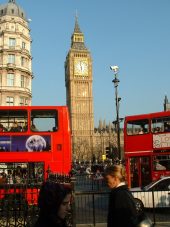
The Clock Tower
Photo: PKG
Chelsea Flower Show
May
Chelsea Flower Show is the world's most popular and renowned flower show. The best in gardening and horticulture is brought together in one place for one week in May.
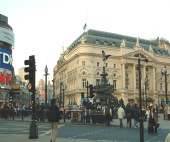 Piccadilly Circus
Photo: PKG
Edinburgh International Festival
August
Each year the Edinburgh International Festival stages one of the greatest celebrations of the arts, attracting audiences from around the world to the city's thrilling atmosphere. The festivities offer a unique opportunity to experience the excitement of live performance by internationally renowned artists as well as the joy of discovering new and unfamiliar works.
 St. James Park
Photo: PKG
Henley Royal Regatta
June
Henley Regatta was first held in 1839. Originally staged by the Mayor and people of Henley as a public attraction with a fair and other amusements, the emphasis rapidly changed so that competitive amateur rowing became its main purpose.
 Horse Guards Parade
Photo: PKG
London Film Festival
November
With a host of gala screenings, special events, The Guardian Interviews, and UK, European and World Premieres, the British Film Institute's London Film Festival is the leading non-competitive event in the international cinema calendar.
 Kenwood House
Photo: PKG
London International Boat Show
January
The London Boat Show is a glittering affair, with all the best in boating on display. London's Earls Court houses the international boat show with all the latest in boats, equipment, watersports and holidays.
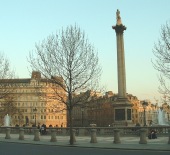 Trafalgar Square
Photo: PKG
London Marathon
April
Aside from being a natural arena for competitiveness and human achievement, the London Marathon is a huge asset to thousands of charities who enter athletes in the hope of raising money, usually on a sponsorship basis.
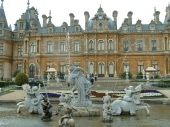 Waddesdon Manor
Photo: PKG
Notting Hill Carnival
August
Every August Bank Holiday the Notting Hill Carnival brings London alive. The festival began as West Indian immigrants moved into the area during the fifties and is now one of the best carnivals in the UK attracting over a million people each year. The first carnival was in 1964, and grew up from the struggle between the black West Indian community and the police. Today the carnival celebrates the diverse cultures which make up Britain's identity.
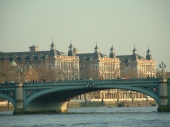 Westminster Bridge
Photo: PKG
Royal Welsh Show
July
This is the flagship show for WCC members. Held in the South Glamorgan Hall, which is situated close to some of the main entrances to the showground, it is also near to the livestock and show rings which attract many thousands of visitors.
 London
Photo: PKG
Southampton International Boat Show
September
The biggest and best of the season's boats is on display, as well as the latest in sailing wear, equipment and great holiday offers.
 Green Park
Photo: PKG
State Opening of Parliament
November
The Queen formally opens the new session of Parliament each year. Accompanied by the Duke of Edinburgh she travels in the State Coach to the Palace of Westminster. Before the royal procession sets out, a detachment of the Yeomen of the Guard (dating from 1485, they are the oldest of the royal bodyguards) search the cellars of the Houses of Parliament. This tradition dates back to the Gunpowder Plot of 1605, when Guy Fawkes was arrested whilst preparing to blow up Parliament. Today the Yeomen are reinforced by police in their search.
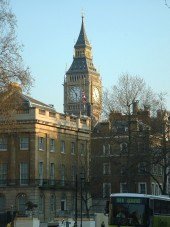 The Clock Tower
Photo: PKG
|





